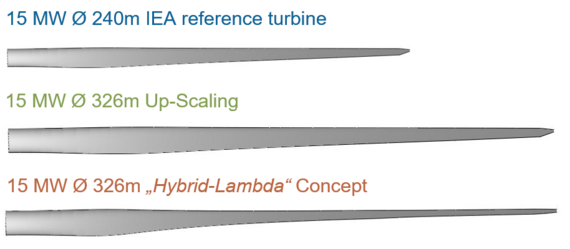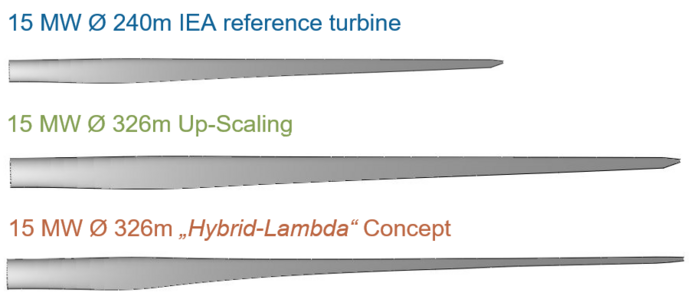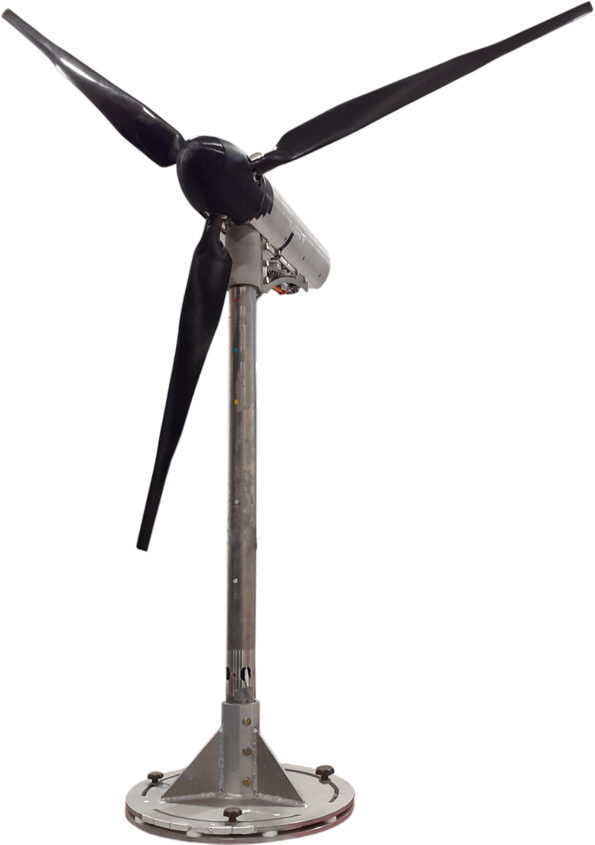Increasing the value of wind energy is critical for achieving a sustainable and future-oriented energy supply. With the increasing share of wind energy in the energy mix, there will be a surplus of available energy during strong wind periods, while a deficit will remain during light winds. This means the value of wind energy is especially high during light wind periods. Future wind farm design and operation will therefore face two main challenges: maximizing energy capture at low wind speeds is desired, which necessitates larger rotors and increases structural loads, on the one hand. But on the other hand, the structural loads during high wind speeds must be limited. Addressing these challenges requires advanced control algorithms that account for specific inflow conditions of large wind turbines and the structural health of individual turbines. The control development will be focused on the so-called hybrid-lambda wind turbine, a turbine with a very low specific rating developed in the first funding period (link). This turbine concept features a light wind operating mode that aims on power maximization and a strong wind operating mode that applies a load constrain while still optimizing the power output.


Objectives
The primary objective is the development of advanced control algorithms for individual wind turbines and for wind farms that maximise the value of wind energy. This involves several sub-objectives:
- Development of Data-Driven Models: Creating accurate models to predict the power output and the structural loads in hybrid-lambda wind farms.
- Structural Health Integration: Incorporating the health state of individual turbines into control algorithms to couple load balancing in the entire wind farm with power maximisation on a wind farm level.
- Blade Lifetime Evaluation: Assessing the impact of control strategies on the lifetime of turbine blades.



Methodology
The subproject C05 focuses on hybrid-lambda wind farms and large turbines with low specific ratings. Key approaches include:
- Development of Operating Modes: These modes target load reduction and compensate for wake interactions. High-fidelity Large Eddy Simulation (LES) and wind tunnel experiments with two scaled turbine models will be used to explore the effects of inflow conditions on wake interactions among different operating modes. The results will be used to generate data-driven models that will form the basis for controller developments.
- Optimal Turbine Control Strategies: The selection of operating points will be based on load restrictions and aims on power maximization. The controller tuning will be accomplished in an automated process. The integration of the digital twin ensures adaptive operation in response to changes in the structural health state.
- Optimal Wind Farm Control: A decision-making framework based on integer dynamic programming will optimize wind farm control, focusing on load balancing within the farm and wind farm power maximization.
- Validation of Control Algorithms: Comprehensive validation efforts will utilize numerical simulations (including the digital twin, OpenFAST, and LES) and experimental setups. Wind tunnel experiments will feature two newly designed model wind turbines (MoWiTO 0.9) which will be developed in this funding period, enabling investigations on the interactions of two fully actuated turbine models. Additionally, the larger model turbine (MoWiTO 1.8) and the active grid, developed in the first funding phase, will be used.
Expected Outcomes
By integrating structural health monitoring as well as information on wake-conditions and inflow characteristics into control algorithms, the proposed approaches aim to enhance energy capture during low wind speeds while minimizing structural loads under strong-wind conditions. With the integration of knowledge from the digital twin in the control algorithms, the wind farm performance can be improved, the structural design can be re-evaluated and the turbine lifetime can be extended.
Subproject Management
Ammerländer Heerstraße 114-118
26129 Oldenburg
Ammerländer Heerstraße 114-118
26129 Oldenburg
Staff
Ammerländer Heerstraße 114-118
26129 Oldenburg
Ammerländer Heerstraße 114-118
26129 Oldenburg








